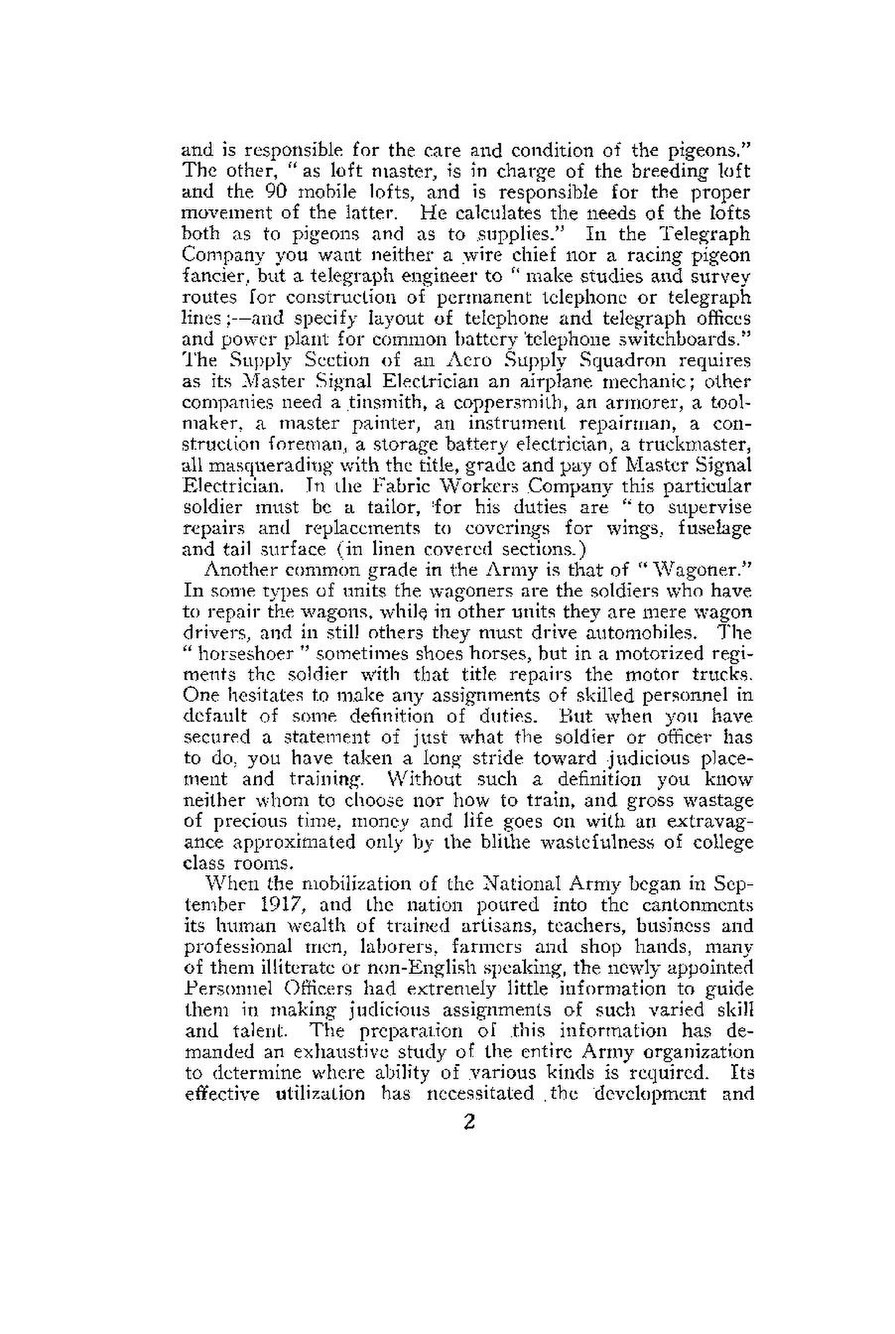and is responsible for the care and condition of the pigeons." The other, "as loft master, is in charge of the breeding loft and the 90 mobile lofts, and is responsible for the proper movement of the latter. He calculates the needs of the lofts both as to pigeons and as to supplies." In the Telegraph Company you want neither a wire chief nor a racing pigeon fancier, but a telegraph engineer to "make studies and survey routes for construction of permanent telephone or telegraphlines;—and specify layout of telephone and telegraph offices and power plant for common battery telephone switchboards." The Supply Section of an Aero Supply Squadron requires as its Master Signal Electrician an airplane mechanic; other companies need a tinsmith, a coppersmith, an armorer, a toolmaker, a master painter, an instrument repairman, a construction foreman, a storage battery electrician, a truckmaster, all masquerading with the title, grade and pay of Master Signal Electrician. In the Fabric Workers Company this particular soldier must be a tailor, for his duties are "to supervise repairs and replacements to coverings for wings, fuselage and tail surface (in linen covered sections.)
Another common grade in the Army is that of "Wagoner." In some types of units the wagoners are the soldiers who have to repair the wagons, while in other units they are mere wagon drivers, and in still others they must drive automobiles. The "horseshoer" sometimes shoes horses, but in a motorized regiments the soldier with that title repairs the motor trucks. One hesitates to make any assignments of skilled personnel in default of some definition of duties. But when you have secured a statement of just what the soldier or officer has to do, you have taken a long stride toward judicious placement and training. Without such a definition you know neither whom to choose nor how to train, and gross wastage of precious time, money and life goes on with an extravagance approximated only by the blithe wastefulness of college class rooms.
When the mobilization of the National Army began in September 1917, and the nation poured into the cantonments its human wealth of trained artisans, teachers, business and professional men, laborers, farmers and shop hands, many of them illiterate or non-English speaking, the newly appointed Personnel Officers had extremely little information to guide them in making judicious assignments of such varied skill and talent. The preparation of this information has demanded an exhaustive study of the entire Army organization to determine where ability of various kinds is required. Its effective utilization has necessitated the development and
2
